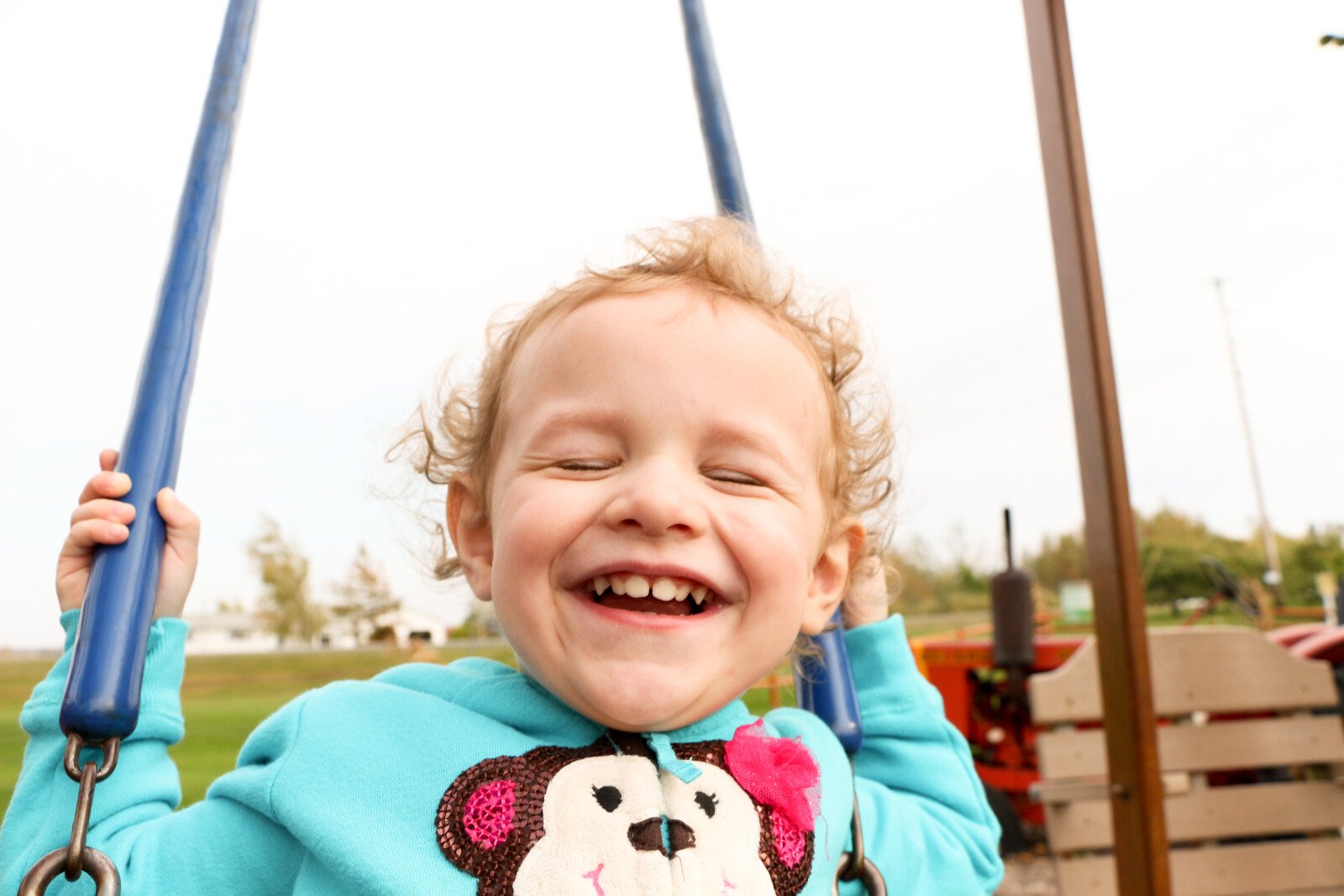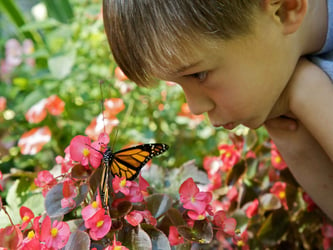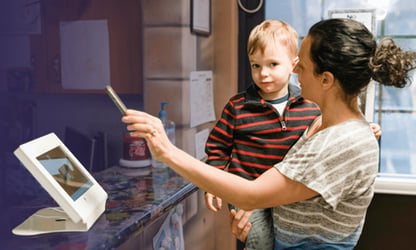Are you a preschool teacher looking for engaging themes to enhance your classroom experience? Look no further! We'll explore the importance and benefits of outdoor activities for preschoolers, including physical, cognitive, emotional and social development. In the process, you'll discover practical tips on how to plan fun outdoor activities for kids based on their age and abilities and discover 10 fun, educational outdoor activities you can incorporate into your curriculum. Let's get started creating memorable learning experiences for your preschoolers!
Table of Contents
- Why Are Outdoor Activities Important for Preschoolers?
- How to Plan Outdoor Learning Activities for Preschoolers
- 10 Fun and Educational Outdoor Activities for Preschoolers
- FAQs
- Get 70+ Editable and Printable Templates for Almost Every Preschool Situation
Why Are Outdoor Activities Important for Preschoolers?

Engaging toddlers and preschoolers with outdoor play and activities is crucial for their overall development and well-being. Preschool learning outdoors offers unique opportunities for children to explore the natural environment, engage in physical activities and develop important skills.
Here are key reasons why toddler and preschooler outdoor play is important:
- Boosts physical and mental health: Preschool outdoor play encourages kids to move their bodies, improving coordination, strength and overall fitness. (Pathways)
- Enhances cognitive development: Exploring nature helps children learn about their environment firsthand, stimulating curiosity and knowledge about plants and animals. (University of Tennessee)
- Develops important skills: Activities like scavenger hunts or gardening is a great way to get outside and help your children refine senses, use their problem-solving abilities and develop a sense of responsibility for the environment. (Harvard)
- Builds a foundation for learning: These experiences create a love for exploration and discovery, setting the stage for lifelong learning and environmental stewardship by developing skills like comprehension of instruction. (National Institutes of Health)
- Helps promote literacy: The storying and re-storying of the children’s encounters outdoors invite infinite possibilities for literacy teaching and learning. Educators can foster these relations with an openness toward what the forests might teach students. (Brock University)
How to Plan Outdoor Learning Activities for Preschoolers

Planning outdoor activities for preschoolers requires careful consideration of the children's age, abilities, learning objectives and gathering necessary materials and resources to create enriching experiences. It's important to choose activities that are not only fun but also safe for the children.
Make sure the area is free from any hazards, such as sharp objects or dangerous plants. Select activities that match the developmental stage of the preschoolers, such as simple sensory activities like exploring different textures or colors in nature.
Consider the Age and Abilities of the Children
When planning outdoor activities for preschoolers, it's essential to consider their age and abilities to ensure that the activities align with their developmental stage and provide optimal learning and engagement opportunities.
Children between the ages of 3 and 5 have varying levels of physical coordination and cognitive skills. For younger preschoolers, simple activities like building sandcastles or playing with water tables or even spray bottles can help develop fine motor skills. On the other hand, older preschoolers may enjoy more complex activities such as nature scavenger hunts or basic team sports to enhance their social interaction and physical abilities.
Choose Activities That Are Safe and Appropriate
Selecting outdoor activities that prioritize safety and appropriateness is crucial when planning for preschoolers. Ensuring a safe environment and suitable activities is key for a positive outdoor experience.
Incorporating risk assessment also helps in identifying potential hazards and taking preventive measures and proper supervision helps preschoolers safe while they explore and play outside. Create a secure outdoor space by checking for any sharp objects, ensuring the playground equipment is age-appropriate and fencing off potentially dangerous areas.
Incorporate Learning Objectives
Incorporating learning objectives into outdoor activities for preschoolers enhances the educational value and promotes skill development across various domains, fostering a holistic learning experience. By blending educational goals with outdoor experiences, children can engage in active learning that stimulates their cognitive, physical and emotional growth.
Exploring nature provides a sensory-rich environment that ignites curiosity and encourages conversations about the natural world through activities such as scavenger hunts or leaf rubbings. Kids can develop observation skills, learn about different plants and animals and practice critical thinking while building teamwork and communication.
Gather Necessary Materials and Resources
Preparation for outdoor activities involves gathering necessary materials and resources to facilitate smooth implementation and enhance the overall experience for preschoolers.
- Art supplies and other creative resources help them unleash creativity and express themselves using natural materials.
- Gardening tools facilitate hands-on learning experiences, nurturing plants and understanding the natural world.
- Safety equipment (helmets, knee pads, first aid kits) create a secure environment during outdoor activities.
- Educational props (magnifying glasses, binoculars) enhance outdoor exploration and learning.
10 Fun and Educational Outdoor Activities for Preschoolers

Engaging preschoolers in fun and easy outdoor activities that are also educational is a fantastic way to enhance their learning experiences and foster a love for nature and exploration. Here are 10 exciting learning activities that combine the great outdoors and learning ideas for young children.
- Nature Scavenger Hunt: Create a list of items for preschoolers to find in the outdoor environment, encouraging them to observe and identify different plants, animals and textures. For older children, encourage them to keep nature journals.
- Sensory Nature Walk: Take a leisurely walk in a natural setting, engaging the senses by touching tree bark, smelling flowers, listening to bird calls and feeling different types of leaves.
- Outdoor Art Station: Set up a designated art area where children can explore painting with natural materials like leaves, sticks and flowers to unleash their creativity.
- Planting Seeds: Teach kids about growth and responsibility by allowing them to plant seeds in a small garden or pots, nurturing their green thumbs.
- Bug Exploration: Introduce children to the world of insects by observing bugs in their natural habitats through magnifying glasses and gentle interactions.
- Obstacle Course: Design a simple obstacle course using natural elements like logs, stepping stones and ropes to encourage children to get moving and boost physical coordination and gross motor skills.
- Outdoor Storytime: Select engaging nature-themed books and read aloud to the children under a shady tree, creating a tranquil yet educational setting.
- Cloud Watching: Lie down on a blanket and gaze at the shapes and movement of clouds, sparking imagination and fostering mindfulness in the young ones.
- Water Play: Provide opportunities for water play with buckets, sponges and toys, allowing children to experiment, splash, squirt and learn about the properties of water. It's also a fun way to cool down on a hot day.
- Bird Feeding: Hang up bird feeders and observe different bird species that come to feed, teaching kids about wildlife observation and kindness toward animals.
1. Nature Scavenger Hunt
Organizing a nature scavenger hunt for preschoolers can ignite their curiosity and foster a deeper connection with the natural world. Setting the stage for the hunt involves creating a list of items for the children to find, such as colorful leaves, pinecones, acorns, twigs, bird feathers or even animal tracks. This free printable can provide a helpful tool to guide the hunt.
Before starting the hunt, it's essential to emphasize the importance of respecting nature by observing without disturbing the environment. Encourage the children to use all their senses to engage in a hands-on exploration of the wonders of nature.
2. Water Play
Water play is a fun, sensory experience for preschoolers. It cools them down, improves their motor skills and sparks creativity. Activities like pouring and splashing help develop hand-eye coordination and problem-solving skills. Caregivers can tailor water play to different ages and abilities to promote well-rounded development. It's a great fit on days when the temperatures rise and the sun is shining.
3. Sensory Walk
A sensory walk immerses preschoolers in a multi-sensory outdoor experience, allowing them to explore nature through touch, smell and observation, enhancing their sensory perception and connection to the environment.
To organize a successful sensory walk for preschoolers, it's essential to plan engaging activities that appeal to their senses. Incorporating natural textures like smooth rocks, rough bark or soft leaves can provide a tactile experience that stimulates their sense of touch. Aromatic scents from flowers, herbs or pinecones can captivate their olfactory senses, encouraging them to explore their surroundings with curiosity. Encourage children to interact with different materials, textures and scents, prompting them to express how each element makes them feel. For example, tools like this free winter sensory walk printable can help facilitate an outdoor experience in the colder months.
4. Outdoor Art Projects
Outdoor art projects enable preschoolers to unleash their creativity, develop fine motor skills and express themselves through nature-inspired artistic endeavors, fostering a love for art and exploration.
Engaging children in nature-themed art activities not only stimulates their imagination but also enhances their appreciation for the environment. By incorporating natural elements like leaves, flowers and stones into their artwork, children can forge a deeper connection with the world around them. Encouraging little ones to experiment with different mediums such as watercolors, clay, mud or even shadow art can spark their curiosity and broaden their artistic horizons. Through these outdoor experiences, preschoolers learn to observe, create and innovate, setting a strong foundation for a lifelong passion for art.
5. Gardening
Gardening offers preschoolers a hands-on experience in plant care, fostering environmental awareness, responsibility and an understanding of growth cycles, while also promoting a connection to nature. Engaging children in gardening activities not only teaches them about the importance of taking care of living things, but also instills a sense of pride and accomplishment as they watch their plants flourish. Create child-friendly gardens by incorporating colorful flowers, easy-to-grow vegetables and tactile plants that appeal to their senses. To help students plant and track their garden's progress, try a free garden planting printable.
6. Obstacle Course
An obstacle course is a dynamic outdoor activity idea that engages preschoolers in physical challenges, promotes motor skills development and enhances coordination and balance through fun and interactive play.
Setting up an obstacle course for preschoolers involves creativity and strategic thinking to cater to varying abilities and interests. You can incorporate balancing beams, tunnels, hurdles and stepping stones to provide a mix of challenges. For younger children, focus on simple obstacles like cones to crawl under or stepping stones to jump across. As children grow older, you can introduce more complex elements such as rope climbs or monkey bars to enhance their problem-solving skills and physical strength. It's crucial to maintain a balance between difficulty levels to ensure every child can participate and enjoy the course.
7. Nature Walk and Exploration
During a nature walk, teachers play a vital role in guiding young explorers through an immersive experience. They can encourage children to closely observe plants, animals and various natural elements they encounter along the way.
By prompting open-ended questions and discussions, educators can stimulate the children's curiosity and critical thinking. This interaction fosters a deeper connection with nature and helps to build a foundation for environmental stewardship.
8. Outdoor Music and Movement
Children benefit greatly from outdoor music and movement activities as they engage both their minds and bodies, promoting cognitive development and physical fitness simultaneously. Incorporating music-based games such as musical chairs, freeze dance or instrument exploration can enhance their listening skills. Motor activities also promote coordination in a fun and interactive way. Dancing to different beats, melodies and rhythms of play under the open sky not only boosts their mood but also strengthens their muscles and balance. Interactive movement exercises like Simon Says or simple obstacle courses can also encourage teamwork and social interaction among the preschoolers, making outdoor play a holistic learning experience.
9. Bubble Play
Bubble play offers preschoolers a sensory-rich experience that stimulates visual and tactile senses, promotes hand-eye coordination and fosters imaginative play through the magical world of bubbles.
This fun activity benefits preschoolers in many ways:
- Sensory play: Stimulates sight and touch
- Motor skills: Improves hand-eye coordination and grasping
- Imagination: Encourages storytelling through bubbles
If you're looking for a fun bubble activity for kids that also encourages STEM learning, you can create an experiment. One fun experiment is to create pop-resistant bubbles from regular materials you can find at home. Such an experiment can teach children about the key elements of a bubble and let them have fun outdoors. Here's a how-to for an anti-pop bubble experiment.
10. Outdoor Storytelling and Dramatic Play
Engaging in outdoor storytelling and dramatic play provides a myriad of benefits beyond just fun — it encourages cognitive growth, social interactions and physical activity. The combination of fresh air, physical movement and imaginative play fosters holistic development in young children. Outdoor play helps enhance language skills as children verbally express their ideas, engage in dialogue with peers and create narratives based on their surroundings. By immersing themselves in nature, children's storytelling becomes enriched with sensory experiences, stimulating their creativity and broadening their worldview.
You can even use free nature storytelling cards to help in the creative process.
Frequently Asked Questions
What are some fun outdoor activities for preschoolers?
There are many fun and engaging outdoor activities for preschoolers, such as scavenger hunts, nature walks, water play and obstacle courses. Even something as simple as time on the playground, going down slides and climbing can be a blast. You can also try sensory activities like finger painting with mud or playing with sand and water.
How can I incorporate outdoor activities into my preschool curriculum?
You can incorporate outdoor activities into your preschool curriculum by planning specific lesson plans or themes around nature and the outdoors. You can also use your outdoor space for free play and exploration during class time.
What safety precautions should I take when planning outdoor activities for preschoolers?
When planning outdoor activities for preschoolers, it's important to consider safety first. Here are a few guidelines to follow (ECLKC).
- Maintain appropriate staff-child ratios at all times outdoors, such as 1:4 for infants and toddlers. Position staff to see and hear all children.
- Develop weather-related policies defining acceptable conditions for outdoor play. Monitor factors like air quality and avoid taking children out in extreme weather.
- Provide shade, sunscreen, protective clothing and insect repellent as needed. Store any necessary medications like EpiPens in an accessible location outdoors.
- Regularly inspect the outdoor space and equipment for hazards, wear and tear. Ensure proper drainage to avoid standing water.
- Provide protective shock-absorbing surfaces like mats or wood chips under climbing equipment. Ensure equipment is age and developmentally appropriate.
- Create separate spaces for different activity levels, for example, place swings and bike paths away from quiet play areas. Allow adequate clearance around equipment.
- Shield play areas from excessive wind and direct sunlight using shade structures, trees, awnings, etc.
Can I use outdoor activities to teach academic concepts to preschoolers?
Yes, outdoor activities can be a great way to teach academic concepts to preschoolers. For example, you can use a nature walk to teach about different types of plants and animals or use an outdoor scavenger hunt to teach counting or color recognition. Even physical activities like running, jumping and playing games can teach science and math concepts to preschool students.
Get 100+ Editable and Printable Templates for Almost Every Preschool Situation
We know preschools like yours are busy. That's why we made dozens of templates to help you manage the various aspects of your organization. With billing and invoicing, activity templates, forms and even marketing materials, we have it all. Download all 100 today!
References
"Playing in Nature." Pathways.org, https://pathways.org/playing-in-nature/?gad_source=1&gclid=CjwKCAjw_LOwBhBFEiwAmSEQAfYf36IjW4O7KhEbAtYh_YKLvqUYb9xte5T3eFMIGcxp3qVjdlh17hoCF5IQAvD_BwE. Published 2023.
"PMC Article 9291496: Supporting preschoolers’ cognitive development: Short‐ and mid‐term effects of fluid reasoning, visuospatial, and motor training," PubMed Central, National Institutes of Health, https://www.ncbi.nlm.nih.gov/pmc/articles/PMC9291496/. Published 2022.
"6 Reasons Children Need to Play Outside." Harvard Health Blog, Harvard Medical School, https://www.health.harvard.edu/blog/6-reasons-children-need-to-play-outside-2018052213880. Published 2020.
[Cara Megan King McClain]. "SOCIAL CONTEXTS OF DEVEL S OF DEVELOPMENT IN NATURAL OUTDOOR TURAL OUTDOOR ENVIRONMENTS." University of Tennessee. Published 2017.
[Debra Harwood and Diane R. Collier]. "The Matter of the Stick: Storying re stor(y)ing." Published 2017, https://www.academia.edu/36060585/The_matter_of_the_stick_Storying_re_storying_children_s_literacies_in_the_forest
Office of Head Start. (n.d.). A Closer Look: Safety Considerations for Supporting Outdoor Play and Exploration for Infants and Toddlers. ECLKC. Retrieved from https://eclkc.ohs.acf.hhs.gov/learning-environments/supporting-outdoor-play-exploration-infants-toddlers/closer-look-safety-considerations












